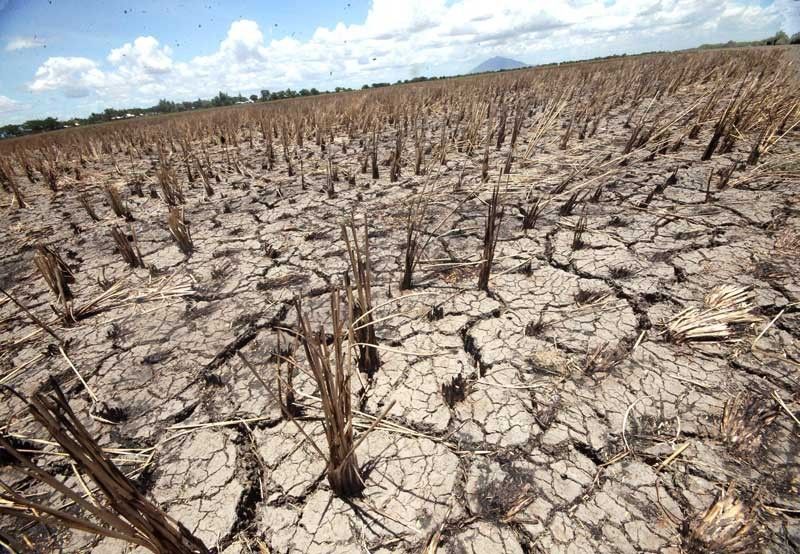How we can still stop global warming

As sea levels continue to rise, temperature shifts and extreme weather becomes more frequent, almost half of the world’s population is now highly vulnerable to the impacts of climate change, according to a report from the United Nation’s Intergovernmental Panel on Climate Change (IPCC).
The IPCC’s 3,600-page report, which was released just a few weeks ago, presents a detailed assessment of the dangers of climate change. Written by 270 researchers from 67 countries— including three from the Philippines— it reviews our vulnerabilities and the capacities to adapt while also highlighting that we are approaching the limits of nature’s and humanity’s ability to adapt.
The report points out that climate change is affecting nature, people’s lives and infrastructure everywhere, hindering basic human needs from being met and threatening sustainable development.
Increasing heat and extreme weather are changing the distribution of plants and animals across the globe, ultimately affecting food webs. This, in turn, reduces the ability of nature to provide the essential services that we depend on to survive – such as coastal protection, food supply, or climate regulation via carbon uptake and storage.
Changes in temperature, rainfall, and extreme weather have also increased the frequency and spread of diseases in wildlife, agriculture, and people. It has also led to more frequent drought, negatively affecting agriculture and energy production.
In cities, people face higher risks of heat stress, reduced air quality, lack of water, and food shortages caused by climate change on supply chains, transport networks, and other critical infrastructure.
Worse, the negative impacts of climate change are expected to intensify as the globe warms.
During COP26, the international community committed to reach a global net-zero emissions target by 2050 and keep the 1.5? global warming target within reach. However, some estimates suggest that the world might still be on track for 2.4? warming even if commitments are delivered.
While predictions are dire, the IPCC’s report still offers a glimmer of hope.
During the launch of the report, UN Secretary-General António Guterres said, “Investments in adaptation work. Adaptation saves lives. As climate impacts worsen – and they will – scaling up investments will be essential for survival. Adaptation and mitigation must be pursued with equal force and urgency.”
There are many effective ways that society can mitigate and adapt to climate change in the near term.
For instance, insights from their forthcoming policy paper presented by Prof. Toby Monsod during a recent Stratbase ADRi event highlighted an adaptation path for countries like the Philippines.
According to the study co-authored by Monsod, “vulnerable countries with relatively small carbon footprints per capita like the Philippines are likely to do more for global efforts to reduce the extent of climate change and cope with its impacts if they build robust community ownership for climate action and leverage opportunities based on their own comparative advantages.” The study went on to highlight the Philippines’ biodiversity of its marine and coastal resources as one of its comparative advantages.
Indeed, according to Hans-Otto Pörtner, co-chair of the IPCC working group II, restoring degraded ecosystems is one way we can adapt to climate change. By effectively and equitably conserving 30 to 50 percent of Earth’s land, freshwater, and ocean habitats, “society can benefit from nature’s capacity to absorb and store carbon, and we can accelerate progress towards sustainable development,” he said.
In addition, to adjust our behavior, adaptation can also mean changing our infrastructure to deal with the changing climate. For instance, in densely populated cities, we can utilize green architecture or plant trees for people and wildlife.
To help prepare communities for extreme weather, we also need essential utilities, such as power, telecommunications, and water lines, to be resilient against extreme weather. We could take a lesson from Odette and avoid toppled over utility polls by investing in underground electricity lines. This would ensure that power could be restored to other critical utilities like water and communications needed for disaster response and coordination.
Cities, especially, must also take full advantage of digital tools that help with climate adaptation. There is a ton of insight and data available out there that local government units can harness to make decisions on building up urban resilience and climate adaptation. For instance, taking advantage of technology, like the Liveable Cities Lab’s big data dashboard, also provides LGUs with the data and the means to more responsively engage can effectively engage stakeholders.
These examples of effective adapting to climate change hint that there is still a glimmer of hope that we still limit the severity of its impact. However, the IPCC report clarifies that the effectiveness of available adaptation options decreases with every increment of warming.
This means that minor, reactive, or incremental changes won’t cut it. Instead, urgent, more ambitious, and accelerated action is needed, and in parallel with rapid and deep cuts in greenhouse gas emissions.
Reshaping society’s behavior is much easier said than done. But what this IPCC report has done is made abundantly clear that climate change is happening faster than expected, but that there are things we can do to stop it. The trouble is that we think we have time, but we don’t.
Paco A. Pangalangan is the executive director of think tank Stratbase ADR Institute.
- Latest





























